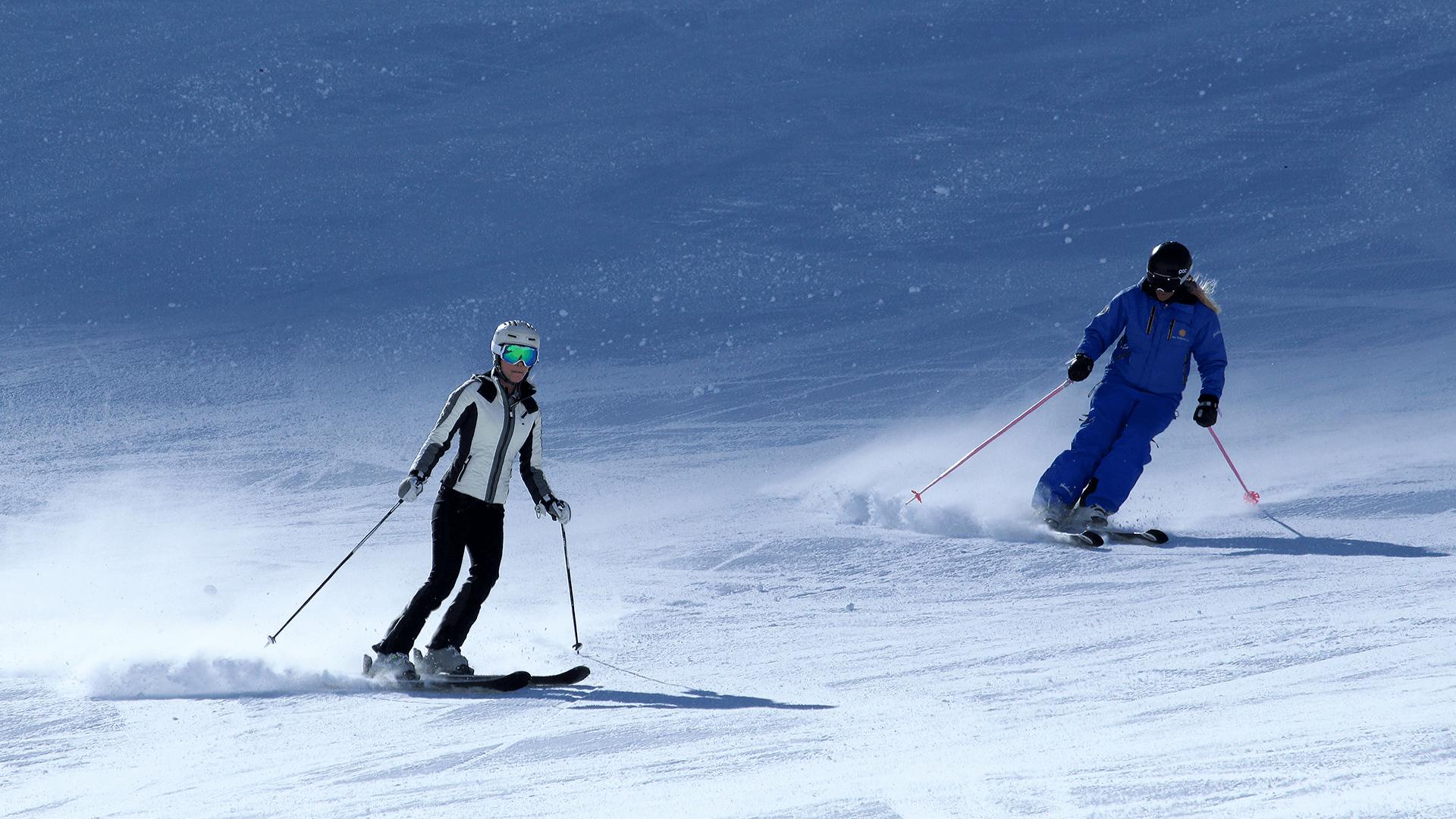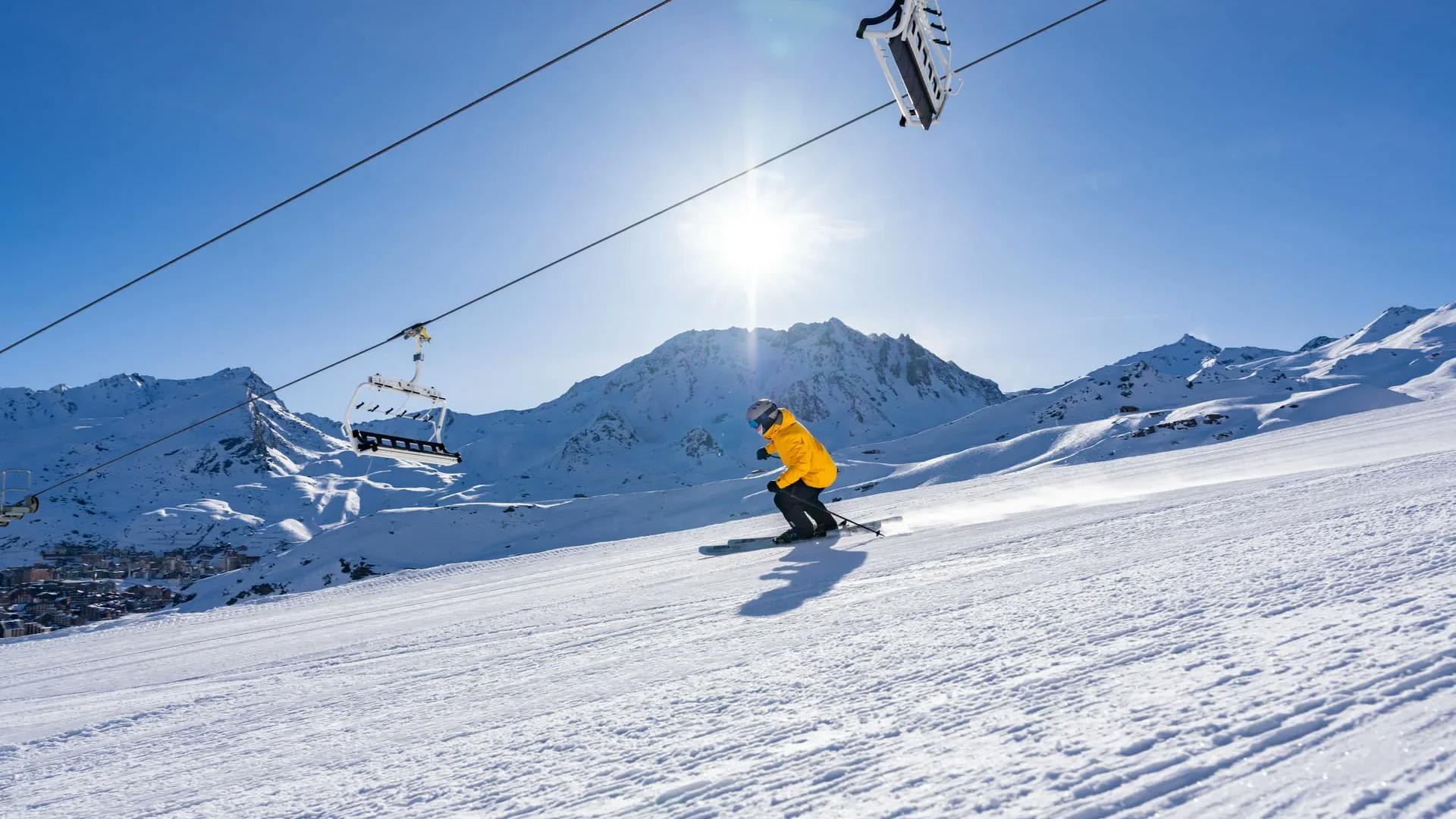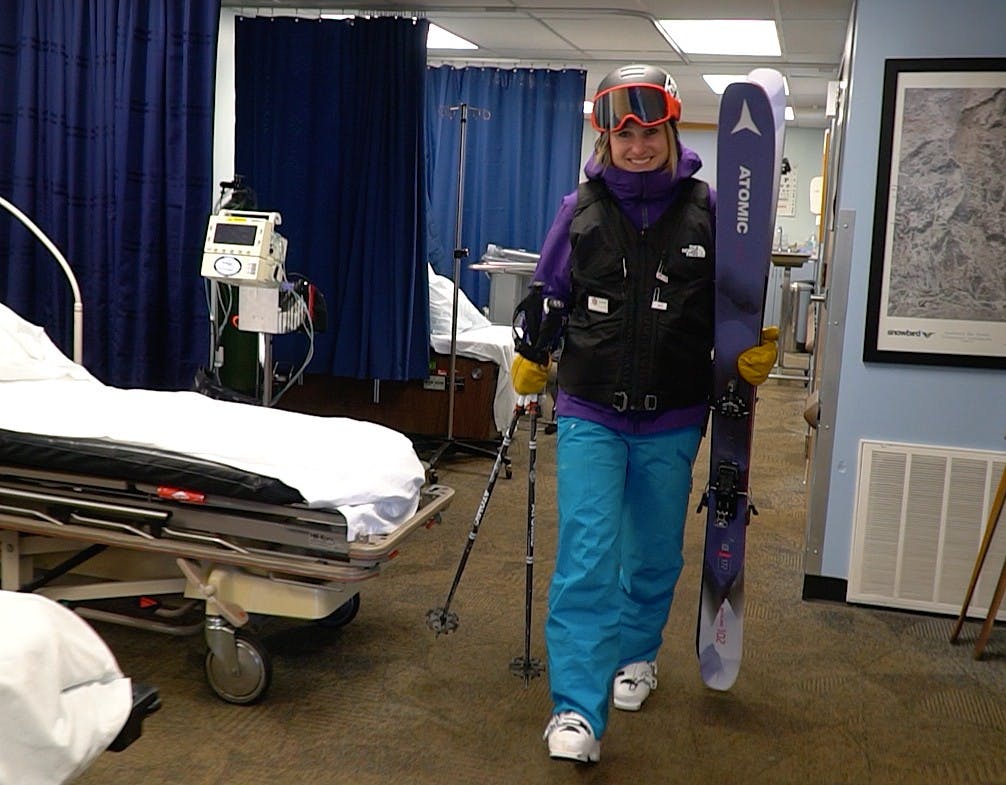
Planning to ski out West this winter? Get ready to elevate – literally. Most western ski resorts sit between 6,000 and 12,000 feet above sea level, with many beginner and intermediate runs reaching into the high alpine. While the views and vertical are spectacular, the thinner mountain air can take some getting used to, especially for travelers coming from lower elevations.
Related: Your First Ski Trip
Once you ascend above 8,000 feet, the risk of altitude-related symptoms increases. That’s because barometric pressure drops significantly at higher elevations, which spreads oxygen molecules farther apart. In other words, every breath you take contains less oxygen than it would at sea level. This reduced oxygen availability can lead to lower blood oxygen saturation, making it harder for your body to deliver oxygen efficiently to your brain, muscles, and other tissues.
For many lowlanders, this can result in altitude sickness. Symptoms often include headache, nausea, fatigue, dizziness, and shortness of breath. And no, being physically fit doesn’t make you immune – altitude affects everyone a little differently. So, how do you make the most of your ski vacation without letting altitude slow you down? We’ve got you covered with 6 essential tips to help your body acclimate and keep your energy high from your first chair to après-ski.

Mammoth Mountain Summit Elevation - 11,053 feet above sea level | Photo: Thomas Galvez
We get it: fresh snow and bluebird skies are calling your name. But when you arrive at a high-elevation resort, pacing yourself on the first day is one of the smartest moves you can make. Physical exertion – especially at elevations above 8,000 feet – intensifies the body’s need for oxygen. And because there’s less oxygen in each breath at altitude, your heart and lungs have to work harder to deliver the same amount your body’s used to at sea level.
Going all-out on day 1 before your body has had a chance to adjust can amplify symptoms of altitude sickness and leave you feeling drained, dizzy, or short of breath – none of which pair well with powder days. Take it slow: opt for mellow terrain, limit your number of runs, and give your body time to acclimate to the thinner air. This small investment of rest and recovery can help you avoid altitude fatigue, maximize performance later, and make the most of every turn.
 There's no shame in hitting the bunny slopes to find your ski legs; better safe than sorry!
There's no shame in hitting the bunny slopes to find your ski legs; better safe than sorry!By liquids, we mean the non-alcoholic kind. Bad news: Alcohol consumption, especially in excess, compounds high-altitude symptoms. Plus, the higher elevation's reduced humidity and air can lead to dehydration, so it's important that lots of water is consumed.
As for food, keep it light and easy to digest, especially in the first day or two. At higher elevations, your digestive system slows down, and large or heavy meals can lead to bloating, discomfort, or nausea. Instead, focus on frequent, smaller meals packed with complex carbohydrates – think whole grains, fruits, and veggies – which help maintain energy and oxygen delivery to muscles.
 Carry a granola bar or two with you – they can be a real game changer!
Carry a granola bar or two with you – they can be a real game changer!When you're skiing at elevation, your body's working overtime. The reduced oxygen levels mean your heart and lungs are constantly compensating, which can leave you feeling more fatigued than usual. Now add full days on the slopes, après energy, and travel stress into the mix, and it's no wonder altitude symptoms can creep in fast.
Sleep is your secret weapon. During deep rest, your body has a chance to adjust to lower oxygen levels, restore energy, and repair muscle tissue after long ski days. Skimping on sleep can prevent proper acclimatization and lead to more intense symptoms like headaches, irritability, and fatigue that just won’t shake off.
Make rest a priority from night one. Aim for 7–9 hours of quality sleep and consider winding down earlier than you normally would at sea level. If you're feeling especially wiped out after your first day, give yourself permission to take it easy – whether that’s a midday nap or swapping après for the hot tub. Because the better you sleep, the better you ski.
 Work with our Mountain Travel Experts to find the perfect hotel room to suit your needs!
Work with our Mountain Travel Experts to find the perfect hotel room to suit your needs!At high altitudes, the sun’s rays are stronger because there’s less atmosphere to filter out harmful ultraviolet (UV) radiation. The higher you go, the more exposed you are, making it easy to get burned faster than you might expect. Whether it’s bright and sunny or overcast, sunscreen is a must. The combination of thin mountain air, reflective snow, and intense UV exposure means that you need to wear sunscreen with at least SPF 15 (preferably higher) and reapply it regularly, especially after wiping sweat or hitting the slopes for a few hours.
Your eyes are vulnerable, too. At elevation, the snow can act like a mirror, reflecting UV rays right into your eyes, increasing your risk of snow blindness (a painful condition where the cornea becomes sunburned). Always wear sunglasses or goggles with UV protection to shield your eyes from the harsh rays.
 Even at frozen temperatures, the sun's rays burn. Apply sun cream as you normally would during the summer.
Even at frozen temperatures, the sun's rays burn. Apply sun cream as you normally would during the summer.At high altitudes, less oxygen impacts your muscle performance, meaning you tire more quickly. When your body is working harder to get oxygen, it’s easier to strain or injure yourself if you’re not properly prepared. Take extra precautions before skiing to reduce injury, like checking your equipment and skiing in line with your physical ability. Know your limits, and choose terrain that matches your skill level.
Warm up before hitting the slopes to get your muscles ready for the day. Stretching increases flexibility and blood flow to your muscles, reducing the risk of injury. Pay attention to snow conditions, as fresh powder or icy patches can dramatically change how your skis react, increasing the chances of falls or accidents. Last but not least – avoid alcohol at lunchtime. While it might be tempting to sip on a cold beer after a few runs, alcohol can impair your coordination, reaction times, and judgment, making injuries more likely, especially when your body is already adjusting to altitude.
 Make sure to acclimate yourself slowly to avoid altitude sickness!
Make sure to acclimate yourself slowly to avoid altitude sickness!Your body will give you subtle (and not-so-subtle) signals when it’s struggling to adjust to high altitude. If you experience fatigue, dehydration, dizziness, nausea, or any other symptoms typical of altitude sickness, it's a warning sign that you need to slow down and rest.
To help improve oxygen intake, try controlled breathing techniques – deep, slow breaths will allow your lungs to absorb as much oxygen as possible, helping your body cope with the thinner air. If you’re in a high-alpine town, some ski resorts offer oxygen canisters available at local gas stations or drug stores, and many travelers swear by this quick fix for relief. It’s a convenient way to get a little extra oxygen into your system and ease symptoms like fatigue or dizziness.
But if your symptoms don’t improve with rest, hydration, and deep breathing – or if they get worse – don’t push through it. It’s important to seek professional care. Visit a local physician or head to the nearest emergency room if needed. In some cases, descending to a lower elevation is often the fastest way to relieve altitude sickness and restore your body’s balance.
 Don't overexert yourself, and don't go beyond your limits!
Don't overexert yourself, and don't go beyond your limits! Have questions about increasing altitude tolerance? Our knowledgeable Mountain Travel Experts are here to help you prepare for the best high-alpine adventure. Reach out today for personalized advice, and get a free quote for your next ski vacation!

Author



Sign up for exclusive offers, news, updates and more.